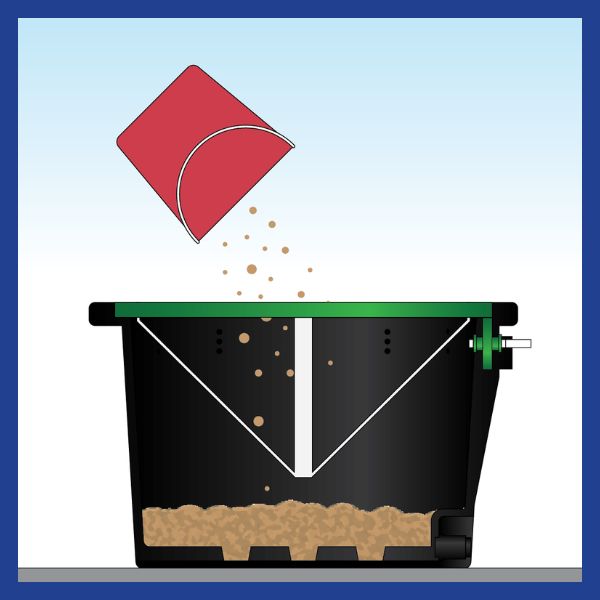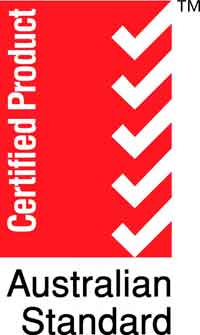The Science of Composting Toilets
Our composting toilets use a natural aerobic process called thermophilic composting. Aerobic microorganisms (AKA microbes), including actinomycetes bacteria and fungi, break down the waste which produces heat and removes pathogens from the material. This process transforms waste into an odourless compost that is safe to handle. The length of time to compost depends on climate, chamber size, and composting conditions.
The four main factors affecting compost are:
Moisture
Oxygen
Carbon & Nitrogen
Temperature
The Four Phases of Composting

1. Mesophilic
Mesophilic organisms, which thrive between 20 - 30 degrees Celsius (68 - 86 degrees Fahrenheit), are breaking down easily decomposable materials like toilet paper. The temperature increases as they proliferate.

2. Thermophilic
Thermophilic organisms grow and thrive between 45 - 70 degrees Celcius (104 - 158 degrees Fahrenheit). This is the rapid decomposition of complex organic materials, generating higher temperatures and killing off pathogens.

3. Cooling
When there's nothing left for the thermophilic organisms, the pile starts to cool and the mesophilic organisms return as the majority. Actinobacteria (and maybe some fungi or mould) will finish decomposing any remaining materials at a slower pace.

4. Curing
Naturally, when the pathogens are killed off and all the material is broken down, the culture of microbes starts to enter a stage of hibernation. The composting pile has matured into a humus, with an appearance and consistency similar to that of fresh potting mix.
Starting a Composting Toilet

Add a starter bed
Add a starter bed of carbon-rich bulking agent, slightly dampened with water.
Recommended:
- Pine wood shavings
- Hemp mulch/bedding
Not recommended:
- Fine sawdust
- Cypress, cedar, or eucalyptus
- Sugarcane mulch

Introduce microbes
After waiting for the equivalent of five days of usage, there will be enough material in the chamber to encourage microbial behaviour. This is the perfect time to introduce your composting microbes.
Mixing a Composting Toilet
A mixer helps to flatten the "cone" shape that naturally forms ensuring that all available space is being utilised, while also aerating the pile.
Warmer climate: Approximately once a fortnight is recommended for full-time usage.
Colder climate: While the composting process slows down in the cold, turn less often to avoid releasing too much heat from the thermophilic microbes.

Finished Compost
In ideal conditions, compost could be completed within a few months. But it does depend on the composting chamber and climate, it could take over 12 months for the compost pile to reach the curing phase.
How to tell if the compost pile is ready?
- Appear slightly crumbly and moist with an earthy smell, similar to a fresh potting mix.
- No longer producing heat and will have reduced in size by nearly half
- Organic material and toilet paper is no longer visible.
Where to use composted waste?
- You can bury the compost 10 cm below ground around fruit or nut trees, lawns, flower beds and shrubs
- Avoid contact with edibles such as vegetables and herbs
Using a Composting Toilet
After every liquid deposit, simply close the lid.
After every solid deposit:



Do not dispose of in the chamber:



Rotating Composting Chambers

One
Cover the compost pile with a shallow layer of bulking agent.

Two
Add a starter bed to the new chamber, and transfer its lid to the full chamber.

Three
Connect the new chamber to the ventilation and drainage hoses.

Four
Leave the full chamber in a sunny position to finish composting.
Types of Composting Toilets
Split Systems
Batch Style Composting
Batch systems require regular rotation of chambers. When the in-service chamber becomes full, it is set aside to finish composting and replaced with the next chamber.

Continuous Style Composting
With continuous systems, material can be completely composted within a single unit. This is achieved through larger tanks that can accommodate a pile in the thermophilic phase of composting within the central mass, but in the mesophilic phase on top, and the curing phase at the collection point.
The material goes through the complete composting process, all four phases, as it travels through the large tank. Compost is automatically moved towards an accessible collection point for removal, so you never handle waste directly, by using a sloped floor and a baffle. Resulting in a simple and hygenic removal process.

Self-Contained Systems
With self-contained composting systems, the waste chamber is positioned inside the pedestal in the bathroom. Compared to split systems where the chamber is located below the floor, separate from the pedestal.
This makes self-contained units an excellent choice for small spaces without enough underfloor clearance for a larger composting system.
The majority of the self-contained systems will have a batch style composting process. Either through interchangeable chambers (rotated in and out like the split systems) or by emptying the internal collection chamber.

There are also automatic systems with built-in mixers and heaters to accelerate the composting process.
Urine Diversion
Diverting urine away from your composting toilet means it can be more efficient during colder conditions. Because the composting toilet can't rely on evaporation or drainage hoses to manage excess liquid.
It's important to remember that urine is a source of nitrogen-rich moisture; so if this is being taken away from a composting pile, the moisture and nitrogen may need to be replaced or the composting process will slow down. Which isn't a problem when the external climate is freezing temperatures and the composting process has already halted.
Types of Urine Diversion
Self-contained toilets with urine diversion tend to have chambers that are too small to allow for the entire composting process to take place. When the waste is being disposed of into an external chamber to compost, diverting urine away from solids can help save on space.
There are two main types of urine diversion toilets:
Extraction
Urine can be diverted away from the pedestal into an external collection method, an evaporation trench, or greywater filter.

Collection
Urine can be collected in an internal chamber and emptied regularly.


